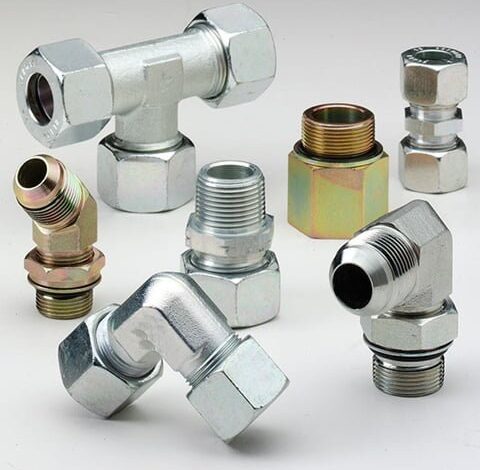The Role of AC Hoses in Effective Refrigerant Circulation

In an air conditioning (AC) system, refrigerant plays the pivotal role of transferring heat, and keeping indoor spaces cool and comfortable. However, the efficiency and effectiveness of refrigerant circulation depend not just on the refrigerant itself but also on the components that carry it through the system. One such crucial component is the AC hose, which ensures the smooth flow of refrigerant between the various parts of the HVAC system.
AC hoses are flexible, durable tubes typically made from reinforced rubber or braided materials designed to handle the high pressures and temperatures associated with refrigerant. These hoses connect vital components, such as the compressor, condenser, and evaporator, and are responsible for transporting refrigerant in both liquid and gas forms. Without properly functioning AC hoses, refrigerant cannot circulate effectively, which can result in system inefficiency, increased energy consumption, and even system failure.
1. AC Hoses Facilitate Refrigerant Flow
AC hoses are critical in maintaining the proper flow of refrigerant through the system. Refrigerant must travel between various components of the AC system to absorb heat from the indoor air and expel it outside. The AC hoses facilitate this movement by connecting the compressor, evaporator coil, and condenser coil, forming a continuous loop.
- Discharge Line (High Pressure): The high-pressure hose carries refrigerant in liquid form from the compressor to the condenser, where the refrigerant releases the absorbed heat to the outside air.
By connecting these components, AC hoses ensure that refrigerant flows through the system without interruption. They are designed to withstand extreme conditions and maintain flexibility, even under the high pressure and temperatures typical in HVAC systems.
2. The Impact of Blockages in AC Hoses
Blockages or restrictions in AC hoses are among the most common causes of refrigerant flow issues in an HVAC system. A blockage can occur due to debris, dirt, ice formation, or wear and tear over time, obstructing the passage of refrigerant. This can lead to a host of performance issues, including:
- Reduced Cooling Efficiency: If refrigerant flow is impeded, the AC system cannot absorb and expel heat efficiently, leading to reduced cooling capacity and increased energy consumption.
- Increased Pressure and Overheating: Blockages cause a buildup of pressure within the system, forcing the compressor to work harder. This can result in overheating, potentially damaging key components like the compressor.
- Frosting and Ice Formation: If refrigerant cannot flow freely, the evaporator coil may become too cold, causing moisture in the air to freeze and form ice on the coils. This reduces the system’s ability to cool and can lead to further blockages.
Preventing blockages is crucial for ensuring that refrigerant can circulate properly, keeping the system running efficiently.
3. The Role of AC Hoses in Preventing Leaks
AC hoses are also designed to prevent refrigerant leaks, which can have serious consequences for system performance and environmental impact. Over time, hoses can degrade due to exposure to UV rays, heat, or general wear and tear, leading to cracks and holes that allow refrigerant to escape. Even small leaks can significantly affect the performance of the AC system by reducing the amount of refrigerant circulating through the system, resulting in:
- Lower Cooling Efficiency: A refrigerant leak can lead to insufficient refrigerant levels, meaning the system cannot cool the air effectively.
- Compressor Damage: Running an AC system with insufficient refrigerant puts excessive strain on the compressor, potentially causing it to fail.
- Environmental Concerns: Leaking refrigerants, particularly those containing harmful chemicals like CFCs or HFCs, can have negative environmental impacts, contributing to ozone depletion and global warming.
Regular inspection of AC hoses for wear, cracks, or leaks is essential to prevent refrigerant loss and maintain the efficiency and environmental responsibility of your HVAC system.
Conclusion: The Critical Role of AC Hoses in HVAC Systems
AC hoses are a vital part of any HVAC system, playing a key role in the effective circulation of refrigerant. These hoses ensure that refrigerant flows smoothly between components, maintaining the pressure and temperature necessary for efficient cooling. Blockages, leaks, or improper installation of AC hoses can have serious consequences, affecting system efficiency, increasing energy consumption, and potentially leading to costly repairs.
By understanding the importance of AC hoses and investing in proper maintenance and timely repairs, you can ensure that your HVAC system operates optimally, providing consistent cooling and extending the lifespan of your equipment.
Read Also : The Impact of Real-Time Tracking on Outbound Logistics and 3PL Warehouse Solutions.
FAQs
1. How can I tell if my AC hoses are damaged?
Signs of damaged AC hoses include visible cracks, leaks, or bulges. You may also notice reduced cooling efficiency or hear hissing sounds, indicating refrigerant leakage.
2. Can I repair AC hoses myself?
It’s recommended to have AC hoses repaired or replaced by a professional HVAC technician, as improper repairs can lead to further damage and efficiency loss.
3. How often should AC hoses be inspected?
AC hoses should be inspected at least once a year during routine maintenance to check for wear, leaks, or blockages. However, more frequent inspections may be necessary in older systems or systems exposed to harsh conditions.
4. What happens if my AC hose is blocked?
A blocked AC hose restricts refrigerant flow, reducing system efficiency, causing overheating, and potentially damaging the compressor. It can also lead to ice buildup on the evaporator coils and reduced cooling capacity.



